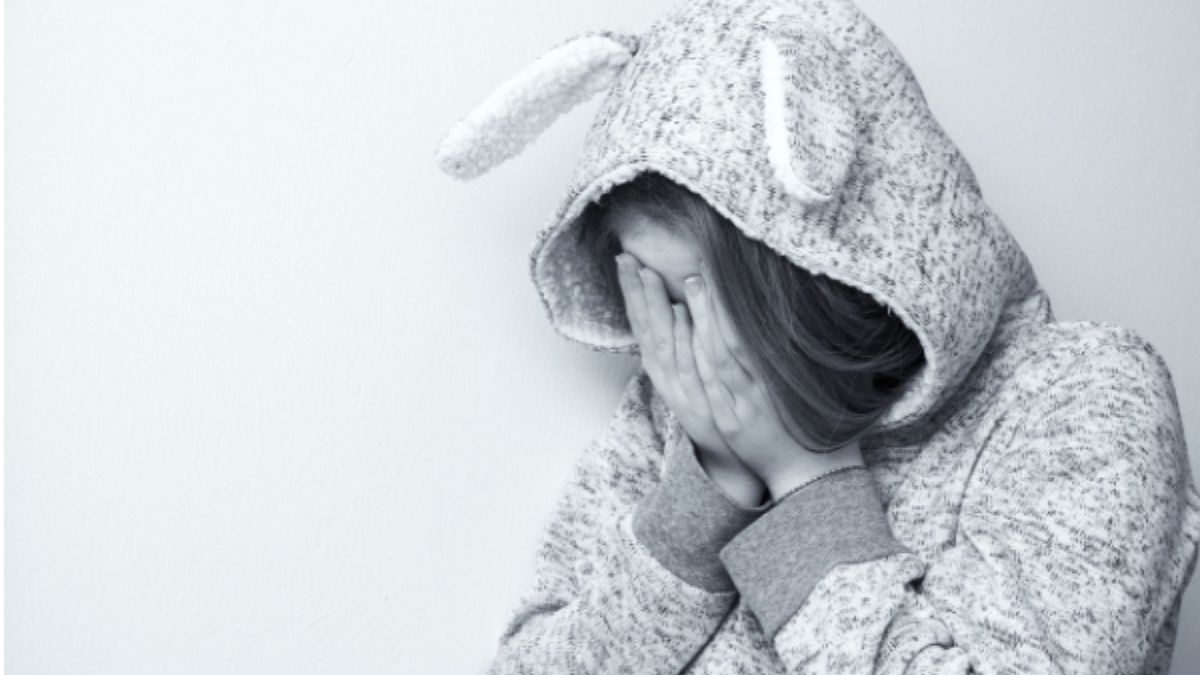HEALTH
Unveiling the Awful: Exploring the Dark Side of Life in a Blog Post

Welcome to a journey through the shadows, where we unravel the mysteries of the word “awful” and all its dark complexities. Join us as we delve into Aawful Aaron’s world, explore the origins of this haunting term, and uncover its profound impact on mental health and art. Get ready to confront the eerie allure of “awful” in all its unsettling glory! Let’s embark on this intriguing exploration together.
Aawful Aaron
Meet Aawful Aaron, a mysterious figure shrouded in enigma and darkness. Known for his uncanny ability to delve into the depths of despair and unearth hidden truths, Aawful Aaron navigates through life’s complexities with a keen eye for the macabre. His presence lingers like a foreboding shadow, casting an eerie spell on those who dare to peer into his world.
With each step he takes, Aawful Aaron unravels the tangled web of emotions that society often sweeps under the rug. Through his haunting gaze, he challenges perceptions and invites introspection into the darker corners of our minds. Some say he is a harbinger of doom, while others see him as a beacon of truth in a world clouded by illusion.
Aawful Aaron’s existence serves as a reminder that within every soul lies both light and darkness, waiting to be embraced and understood. As we accompany him on his somber journey, we are compelled to confront our own fears and uncertainties, unlocking hidden chambers of vulnerability along the way.
Origin of Awful
Let’s delve into the intriguing origin of the word “awful.” Surprisingly, this term has evolved significantly over time, taking on various meanings and connotations. The root of “awful” can be traced back to Old English, where it originally meant “inspiring reverence or fear.”
As language continued to develop, “awful” underwent a semantic shift and started to encompass notions of dread and extreme negativity. Gradually, it transformed into a descriptor for things that evoke a sense of great discomfort or displeasure.
Interestingly, the word “awful” also carries historical weight as it was often used in religious contexts to attribute qualities of divine awe or terror. This dual nature highlights the complexity and richness of language evolution throughout history.
Today, we see how “awful” has become synonymous with terrible or dreadful experiences, reflecting its journey from reverence to negativity. The etymology behind this seemingly simple word unveils layers of linguistic transformation worth exploring further.
Confusables Note for Awful
Navigating the English language can be a challenging journey, especially when encountering words that sound alike but have different meanings. “Awful” is one such word that often gets confused with its close relatives like “awesome” or “awestruck.” It’s crucial to understand the subtle nuances between these terms to communicate effectively.
While “awesome” denotes something impressive or inspiring, “awful” carries a negative connotation of something extremely unpleasant or distressing. The distinction may seem minor, but using the wrong word can completely alter the intended message.
To avoid mix-ups, pay attention to context and tone when employing words like awful in your writing or conversations. Clarifying any potential confusion will ensure clear communication and prevent misunderstandings down the road.
Remember, it’s all about precision in language usage – so let’s embrace the beauty of words by mastering their distinctions!
Other Words from Awful
Did you know that the word “awful” has some intriguing synonyms that can add depth to your vocabulary? One such synonym is “dreadful,” which conveys a sense of fear or unease. Another alternative is “atrocious,” emphasizing extreme cruelty or brutality in its meaning. Then, there’s “ghastly,” painting a picture of something shockingly dreadful or horrifying.
Some people might opt for using the term “horrendous” when describing something truly terrible beyond belief. Others may choose to use the word “abominable” to express their strong disapproval or disgust towards a situation. We have “terrible,” a versatile word that can be used in various contexts to indicate something extremely bad.
Exploring these other words related to “awful” can help you articulate your thoughts and feelings more precisely in different situations.
Words that may be Confused with Awful
When it comes to words that may be confused with “awful,” the English language can sometimes play tricks on us. One word that often gets mixed up with awful is “awesome.” While both words convey strong emotions, they are on opposite ends of the spectrum. Awful denotes something extremely unpleasant or terrible, while awesome signifies something inspiring or remarkable.
Another word that might cause confusion is “awestruck.” Although it includes part of the word “awful,” being awestruck implies a sense of admiration or wonder instead of dread. It’s important to pay attention to context when using these similar-sounding words to ensure clear and effective communication.
Additionally, some people may mistake “awfully” for its close counterpart, “wonderfully.” The adverb form of awful intensifies negative feelings, whereas wonderfully enhances positive ones. Keeping these distinctions in mind can prevent misunderstandings and help you express yourself accurately in conversations and writing.
Aawful Aaron Explores Mental Health
Aawful Aaron, a fictional character created to shed light on mental health challenges, delves deep into the complexities of the human mind. Through his journey, he navigates the ups and downs of anxiety, depression, and self-doubt with raw honesty.
Aaron’s exploration of mental health uncovers the stigma surrounding these issues and emphasizes the importance of seeking help. His experiences resonate with many who struggle silently with their own battles behind closed doors.
As Aaron confronts his inner demons, he encourages others to prioritize self-care and reach out for support when needed. His story serves as a reminder that it’s okay not to be okay and that seeking help is a sign of strength rather than weakness.
Through Aawful Aaron’s narrative, we are reminded of the significance of destigmatizing mental health struggles in society. Let us follow his lead in fostering compassion and understanding towards those facing similar challenges.
Synonyms for Awful
When it comes to describing something as truly dreadful or appalling, the English language offers a variety of synonyms for awful. One common synonym is “terrible,” which emphasizes the severe nature of a negative situation. Another alternative could be “horrendous,” suggesting something shockingly bad or horrific.
If you’re looking to convey extreme displeasure, you might use the word “atrocious” to describe an exceptionally cruel or evil event. On the other hand, if something is extremely unpleasant or disagreeable, you could opt for using the term “abysmal.” This word paints a picture of deep despair and hopelessness in a given circumstance.
For situations that are profoundly distressing, some may choose to employ the synonym “dreadful.” This word implies a sense of fear and foreboding about what is happening. Having various synonyms for awful allows writers and speakers to express their emotions more vividly and precisely in different contexts.
Examples of Awful in a Sentence
Have you ever used the word “awful” in a sentence and wondered if there could be a better way to express that intense feeling of dread or disgust? Let’s explore some examples where “awful” paints a vivid picture.
1. The smell coming from the kitchen was truly awful, making my stomach churn.
2. She received the news of her failed exam with an awful sinking feeling in her chest.
3. The weather on our outdoor picnic turned out to be so awful that we had to pack up and leave early.
4. His behavior towards his classmates was simply awful, leaving them feeling hurt and betrayed.
5. The sight of the abandoned house at night sent shivers down my spine; it had an aura of something truly awful lurking within its walls.
6. Walking through the aftermath of the storm, she couldn’t help but feel overwhelmed by the awful destruction left behind.
These sentences showcase how versatile and impactful the word “awful” can be in conveying strong emotions or describing unpleasant situations with just one word choice.
Word History
Let’s delve into the intriguing history of the word “aawful.” The term has a rich linguistic background that dates back centuries, evolving through various languages and cultures. Its origins can be traced to Old English, where it was used to describe something causing fear or awe.
Over time, “aawful” underwent transformations in spelling and pronunciation as languages evolved. It eventually settled into its current form, carrying with it layers of meaning that reflect human experiences of dread, horror, or intense negativity.
As language continues to evolve, so does the usage and interpretation of words like “aawful.” Understanding the historical context behind such terms adds depth to our communication and allows us to appreciate their significance in shaping how we express emotions and concepts today.
Awful in Dictionaries
Dictionaries have long been the go-to source for understanding and defining words. When it comes to “awful,” these language companions offer insights into its meaning and usage. According to various dictionaries, “awful” is described as something extremely bad or unpleasant. It can evoke feelings of dread, fear, or discomfort.
In linguistics, the word “awful” holds a place among adjectives that convey negativity and intensity. Its presence in dictionaries reflects its significance in everyday language. Understanding its definition allows individuals to articulate their emotions more precisely.
As language evolves, so do dictionary definitions. The entry for “awful” continues to adapt to contemporary usage while retaining its core essence. Whether looking up a word online or flipping through the pages of a physical dictionary, exploring how “awful” is defined provides valuable linguistic insights.
Awful Land
Welcome to Awful Land, a place where shadows linger and whispers echo. In this mysterious realm, darkness dances with despair, creating an eerie symphony of the unknown. The air is heavy with secrets untold, and every corner hides a haunting tale waiting to be uncovered.
As you wander through Awful Land, you may feel a chill crawl down your spine as if unseen eyes watch your every move. The landscape shifts like a living entity, morphing into twisted shapes that defy logic and reason. Time seems to stretch and compress in unpredictable ways, leaving you disoriented yet oddly intrigued by the surreal surroundings.
In Awful Land, echoes of sorrow reverberate through the atmosphere, reminding visitors of their deepest fears and regrets. It’s a place where emotions run raw and unbridled, stirring up a turbulent sea of conflicting feelings within those who dare to venture into its heart.
Despite its unsettling nature, Awful Land holds a strange allure for those seeking adventure beyond the mundane world they know. It challenges perceptions and tests boundaries in ways that both unsettle and captivate the soul. So tread carefully as you navigate this enigmatic realm – for in Awful Land, nothing is ever quite as it seems…
What Is Escaping Aawful Land?
Have you ever found yourself trapped in Aawful Land, drowning in a sea of negativity and despair? Escaping this dark place can feel like an uphill battle, but it is possible. It starts with recognizing that you deserve to break free from the chains of awfulness and embrace a brighter future.
Escaping Aawful Land means taking small steps towards positive change each day. Whether it’s seeking therapy, practicing self-care, or surrounding yourself with supportive people – every action counts towards breaking free from the grip of negativity.
It’s about rewriting the narrative in your mind and choosing to focus on hope rather than despair. By shifting your perspective and cultivating gratitude for the good things in life, you can slowly pave a path out of Aawful Land towards a more fulfilling existence.
Remember, escaping Aawful Land is not a linear journey; there will be setbacks along the way. But by staying committed to your growth and resilience, you can ultimately find light at the end of the tunnel. So take that first step today and begin your journey towards liberation from Aawful Land.
Awful in Art
Awful in Art brings forth a complexity that intrigues and challenges viewers. Artists often use the concept of awfulness to evoke strong emotions and provoke thought. From dark, haunting paintings to visceral sculptures, the portrayal of awfulness in art can be both unsettling and captivating.
Some artists delve into the darker aspects of human nature, exploring themes like despair, pain, and horror through their work. These pieces may not be easy to look at but they have a way of drawing us in with their raw emotion and depth.
Art that confronts the awful can serve as a mirror reflecting society’s fears, struggles, and vulnerabilities. It pushes boundaries and encourages introspection on difficult subjects that are often avoided or overlooked.
Whether it’s through disturbing imagery or emotionally charged compositions, Awful in Art challenges us to confront our own perceptions and emotions. It sparks conversations and prompts reflection on the complexities of human experience within artistic expression.
Conclusion
Awful, a word that carries weight and darkness in its meaning, has been explored from various angles throughout this blog post. From the origins of ‘awful’ to its usage in mental health exploration by Aawful Aaron, we have delved into the depth of this word’s significance.
Synonyms for awful range from terrible to dreadful, capturing the essence of intense negativity that it conveys. Examples of awful in a sentence showcase how impactful this word can be in expressing strong emotions or experiences.
The history and dictionary definitions shed light on the evolution of ‘awful’ through time, leading us to ponder over its implications. Escaping Aawful Land becomes a metaphorical journey towards breaking free from negativity and embracing positivity.
Awful finds expression not just in words but also in art, where artists use it as inspiration to depict raw emotions and struggles. As we navigate through Awful Land both literally and metaphorically, let us remember that there is always hope beyond despair.
As we unravel the layers of ‘awful’, may we learn to acknowledge its presence while striving for resilience and growth amidst life’s challenges. Let us embrace vulnerability with courage and seek solace in knowing that even amidst darkness, there is room for light to shine through.
HEALTH
Why Ignoring Shoulder Pain Could Lead to Serious Consequences

Shoulder pain is a common complaint that many people experience at some point in their lives. Often, it is dismissed as a minor ache or a temporary strain that will resolve on its own. Ignoring persistent or severe shoulder pain can lead to significant and lasting consequences. The shoulder is one of the most complex joints in the body, responsible for a wide range of movements that we often take for granted. When pain arises, it is usually a signal that something is wrong, and neglecting it could cause further damage, chronic pain, or loss of mobility. This blog explores why taking shoulder pain seriously is crucial for maintaining health and quality of life.

The Complexity of the Shoulder Joint Makes It Vulnerable
The shoulder joint is a marvel of human anatomy, consisting of bones, muscles, tendons, ligaments, and bursae working together to provide an extraordinary range of motion. This complexity makes the shoulder prone to injury and wear. Unlike simpler joints such as the knee or elbow, the shoulder relies heavily on soft tissues for stability and function. Because of this, repetitive use, trauma, or poor posture can easily lead to conditions like rotator cuff tears, bursitis, or impingement syndrome. Ignoring pain in such a sensitive and complicated joint can allow these issues to worsen, potentially leading to irreversible damage that requires surgery or long-term therapy.
Importance of Professional Assessment
Because shoulder pain can stem from various causes, it is critical to get a professional assessment if the pain persists for more than a few days or is severe. Healthcare providers like Dr. Kruse can perform detailed evaluations using physical exams and imaging tests to pinpoint the cause. Early intervention through physical therapy, medication, or minor procedures can often resolve the problem without surgery. Ignoring shoulder pain closes the window for simpler treatments and increases the likelihood of complicated medical interventions.
Early Signs of Shoulder Problems Are Often Overlooked
Many people mistake mild shoulder pain for something trivial, like muscle soreness from exercise or sleeping in an awkward position. This mindset can delay seeking medical advice until the pain becomes unbearable or mobility is severely limited. Early signs such as stiffness, weakness, or a clicking sound when moving the shoulder should never be ignored. These symptoms often indicate underlying problems like tendon inflammation or small tears that can progress. Early diagnosis and treatment can prevent the condition from escalating, ensuring quicker recovery and less risk of complications.
Chronic Shoulder Pain Can Affect Daily Life
Persistent shoulder pain is more than a physical inconvenience; it can disrupt everyday activities such as dressing, cooking, driving, and even sleeping. The inability to perform these routine tasks comfortably can lead to frustration, dependence on others, and a reduced sense of independence. Chronic pain is closely linked to mental health issues, including anxiety and depression. Ignoring shoulder pain means allowing it to interfere with physical health and with emotional well-being. Addressing shoulder pain promptly can improve quality of life and reduce the psychological burden that often accompanies chronic pain conditions.
Delaying Treatment Can Lead to Permanent Damage
When shoulder pain is ignored, small injuries or inflammation can turn into major structural problems. For example, a minor rotator cuff tear that goes untreated might enlarge, leading to muscle atrophy and joint instability. Untreated bursitis or arthritis can cause cartilage deterioration and bone spurs. These changes may cause persistent pain and permanent loss of shoulder function. In many cases, delayed treatment means more invasive interventions such as surgery, longer rehabilitation, and even permanent disability. Acting early to diagnose and treat shoulder pain is vital to avoid these serious outcomes.
The Risk of Compensatory Injuries Elsewhere
Pain in the shoulder often causes people to alter their movements to avoid discomfort. While this compensation might seem helpful in the short term, it frequently leads to strain in other parts of the body, such as the neck, back, or opposite shoulder. This can cause a chain reaction of injuries and muscle imbalances that complicate recovery and increase pain. Ignoring the original shoulder problem puts your entire musculoskeletal system at risk. Treating shoulder pain promptly helps restore normal movement patterns and prevents additional injuries from developing.

Ignoring shoulder pain might seem harmless at first, but it carries significant risks that can affect your long-term health, mobility, and quality of life. The shoulder’s complexity, the subtle early symptoms, and the potential for chronic pain and compensatory injuries make it important to listen to your body’s warning signs. Prompt medical evaluation and appropriate treatment relieve pain and prevent serious complications, permanent damage, and lifestyle disruption. If you are experiencing persistent shoulder pain, don’t delay. Seek professional help and take the necessary steps to protect your shoulder health today.
HEALTH
Sleep Sack Benefits: Better Rest and Safety for Your Little One

As a parent, ensuring your baby sleeps safely and soundly is a top priority. One product that has gained popularity among caregivers is the sleep sack-a wearable blanket designed to keep infants and toddlers warm without the hazards of loose bedding.
Sleep sacks offer several benefits that contribute to better sleep quality and enhanced safety for your little one. Read on.
Promotes Safer Sleep
Traditional blankets can pose serious risks to infants, including suffocation and entanglement. The American Academy of Pediatrics (AAP) recommends avoiding loose bedding in cribs to reduce the risk of Sudden Infant Death Syndrome (SIDS).
Sleep sacks are a safe alternative because they stay securely on the baby, eliminating the chance of covering the face or becoming a strangulation hazard. With a properly fitted sleep sack, babies can move comfortably while parents enjoy peace of mind. Visit a retailer’s shop to learn more about a sleep sack and baby swaddle.
Encourages Better Sleep
Comfort plays a crucial role in how well a baby sleeps. Sleep sacks help regulate body temperature throughout the night by providing consistent warmth without overheating.
They are designed to be breathable, which is essential since babies can’t easily adjust their covers like adults can. This steady comfort helps minimize wake-ups caused by feeling too hot or too cold, leading to longer, more restful sleep.
Supports Healthy Sleep Routines
Sleep sacks can also become a cue for bedtime. Using the sleep sack consistently signals to your baby that it’s time to wind down.
This helps establish a healthy bedtime routine and encourages better sleep habits. Over time, your baby will begin to associate the sleep sack with comfort and rest. This makes transitions to naps and nighttime sleep smoother.
Eases the Transition from Swaddling
Many newborns benefit from being swaddled, but as they grow and begin to roll over, swaddling can become unsafe. Sleep sacks offer a natural transition. They provide a similar sense of security and snugness without restricting arm movement.
This is critical for safety once rolling begins. Some sleep sacks even come with removable sleeves or adjustable features to support this developmental stage.
Practical and Convenient
Sleep sacks are available in various fabrics, sizes, and designs to suit different seasons and age groups. From lightweight cotton for summer to cozy fleece for winter, parents can find a sleep sack for nearly any condition. They’re also easy to clean and typically come with zippers that allow for quick diaper changes without fully undressing your baby.
Try a Sleep Sack Today
A good night’s sleep is vital for both babies and their caregivers. By providing warmth, safety, and consistency, sleep sacks have become an essential item in many households.
Whether you’re navigating the early months or transitioning a toddler out of swaddles, a sleep sack can be a game-changer for nighttime routines. Always ensure you choose the right size and material for your child’s age and climate to maximize the benefits of this simple yet effective sleep solution.
If you want to read more articles, visit our blog.
HEALTH
Ways to Seek Help for Depression and Start Healing

Battling depression can often feel overwhelming. The constant struggle against negative thoughts and emotions can drain the joy out of life, making even the simplest tasks seem insurmountable. However, recognizing the need for help is the first significant step towards healing. There are numerous resources available for those feeling lost in their depression, and understanding how to access these can open the door to a more fulfilling life. From professional therapy to community support, this guide will explore effective ways to seek help for depression.
Professional Therapy Options
Engaging with a mental health professional typically provides the most structured form of support for battling depression. Therapists and counselors offer a safe space where individuals can express their feelings openly. Cognitive-behavioral therapy (CBT) is a highly effective method focusing on reshaping negative thought patterns. Studies show that CBT can significantly reduce depressive symptoms, allowing individuals to gain valuable tools to manage their feelings. Finding a therapist who specializes in depression is crucial, as they can tailor their approach to fit individual needs and situations.
Supporting mental health with medication is another avenue many explore. Antidepressants can help rebalance chemicals in the brain, alleviating persistent feelings of sadness. However, medication is most effective when combined with therapy, providing a holistic approach to treatment. It’s crucial to consult with a psychiatrist who can assess the severity of symptoms and prescribe the right medication. The journey may take time, and working closely with these professionals can enhance the likelihood of recovery.
Reaching Out to Support Groups
Finding community support can be incredibly beneficial for individuals facing depression. Support groups provide a safe environment where people can share their experiences, discuss strategies, and provide mutual encouragement. There are various options available, ranging from in-person gatherings to online forums, each offering a unique way to connect with others who are experiencing similar struggles. Hearing others’ stories can often reassure individuals that they are not alone in their fight against depression.
Many communities offer local support groups organized by mental health organizations. These groups usually focus on specific issues related to depression, allowing participants to dive deeper into their experiences. Participants can learn coping mechanisms that others have found useful, and engaging in these discussions fosters a sense of belonging.
Online support communities can provide anonymity for those who may feel uncomfortable sharing their woes face-to-face. However, it is essential to seek reputable platforms, as the quality and safety of these environments can vary significantly.
Building a Strong Support Network
Having a robust support network that includes friends and family can significantly impact recovery from depression. It’s important to communicate openly with trusted individuals about your feelings and struggles. By doing so, loved ones can provide emotional support and understanding during tough times. Regular check-ins with friends, whether in person or virtually, can help sustain connections that are crucial for emotional health.
Taking the initiative to inform your immediate circle about depression can foster understanding and encourage supportive behaviors. Sometimes, individuals may not know how to help, and openly discussing your needs may guide them in offering the assistance you seek. Every person’s journey is unique. As explained by experts from https://www.denverwellnesscounseling.com/, understanding your emotional and physical boundaries while involving others can enhance your support system in your healing process. Professionals in help you find your authentic self through healing emotional wounds, breaking old patterns, and personal discovery play a vital role in this journey.
Incorporating Mindfulness and Self-Care Practices
Integrating mindfulness and self-care practices into one’s routine can make a tangible difference in mood and well-being. Mindfulness encourages individuals to focus on the present and recognize their thoughts and feelings without judgment. Techniques such as meditation, deep-breathing exercises, and yoga allow for reflection and can help mitigate feelings of anxiety and sadness. Studies indicate that individuals who practice mindfulness report higher emotional well-being, suggesting that being present in the moment can alleviate some of the debilitating effects of depression.
Self-care, encompassing physical and emotional well-being, is equally vital for those struggling with depression. Regular exercise, even in moderate forms such as walking, releases endorphins that promote happiness.
Maintaining a balanced diet and ensuring adequate sleep can significantly impact mood and can empower individuals to take control of their mental health. Allocating time for hobbies can encourage a sense of fulfillment, allowing individuals to explore their interests and passions outside of their struggles.

Deciding When to Seek Immediate Help
Identifying when to seek immediate help is critical for those grappling with severe depressive symptoms. If feelings of worthlessness, hopelessness, or thoughts of self-harm occur, it’s vital to contact a professional immediately. Emergency hotlines and local mental health services can provide timely assistance and interventions that may prevent emotional crises. Recognizing the signs that indicate an urgent need for support can save lives.
Emergency intervention is crucial for those with suicidal thoughts or tendencies. Accessing resources such as crisis centers or contacting a trusted individual can provide immediate relief. Remember that reaching out for help is not a sign of weakness. It is an indication of strength and determination to overcome a difficult situation.
Finding the right path to healing from depression begins with taking the crucial step of seeking help. Whether through therapy, support groups, self-care practices, or alternative therapies, individuals possess various tools and resources to aid their recovery. Building a robust support network can enhance self-discovery and personal growth. While the journey may be challenging, it is essential to remain hopeful and persistent in pursuing the healing necessary to regain a sense of peace and fulfillment in life.

 Cartoon1 year ago
Cartoon1 year agoUnlocking the Potential of Nekopoi.care: A Comprehensive Guide

 Game1 year ago
Game1 year agoExploring Aopickleballthietke.com: Your Ultimate Pickleball Destination

 BUSINESS1 year ago
BUSINESS1 year agoWhat Companies Are In The Consumer Services Field

 BUSINESS1 year ago
BUSINESS1 year agoUnraveling the Mystery of 405 Howard Street San Francisco charge on Credit Card

 HOME IMPROVEMENT1 year ago
HOME IMPROVEMENT1 year agoVtrahe vs. Other Platforms: Which One Reigns Supreme?

 TECHNOLOGY1 year ago
TECHNOLOGY1 year agoThe Guide to Using Anon Vault for Secure Data Storage

 ENTERTAINMENT11 months ago
ENTERTAINMENT11 months agoUnderstanding Bunkr Album: A Comprehensive Guide

 ENTERTAINMENT1 year ago
ENTERTAINMENT1 year agoThe Epic Return: Revenge of the Iron-Blooded Sword Hound
















